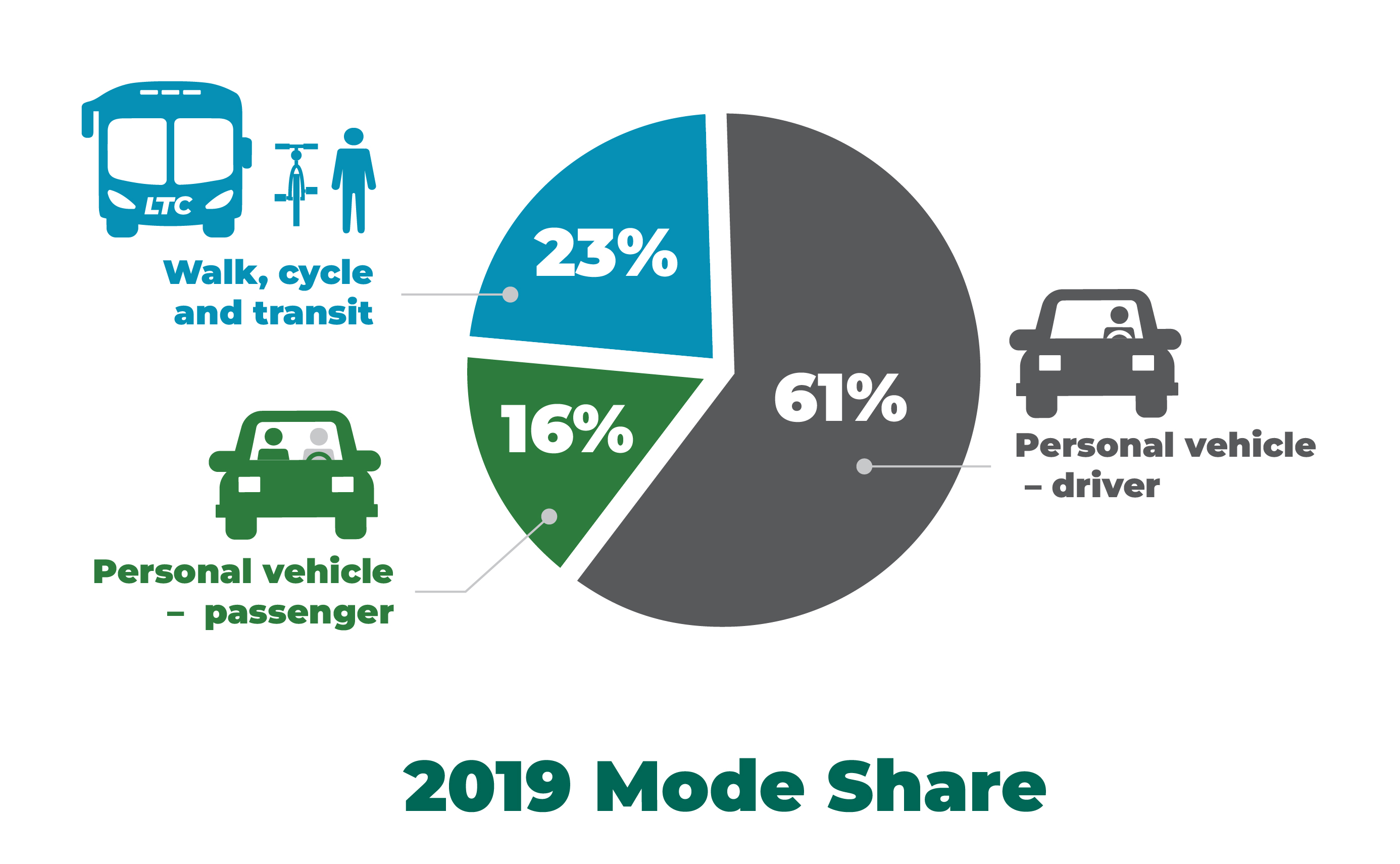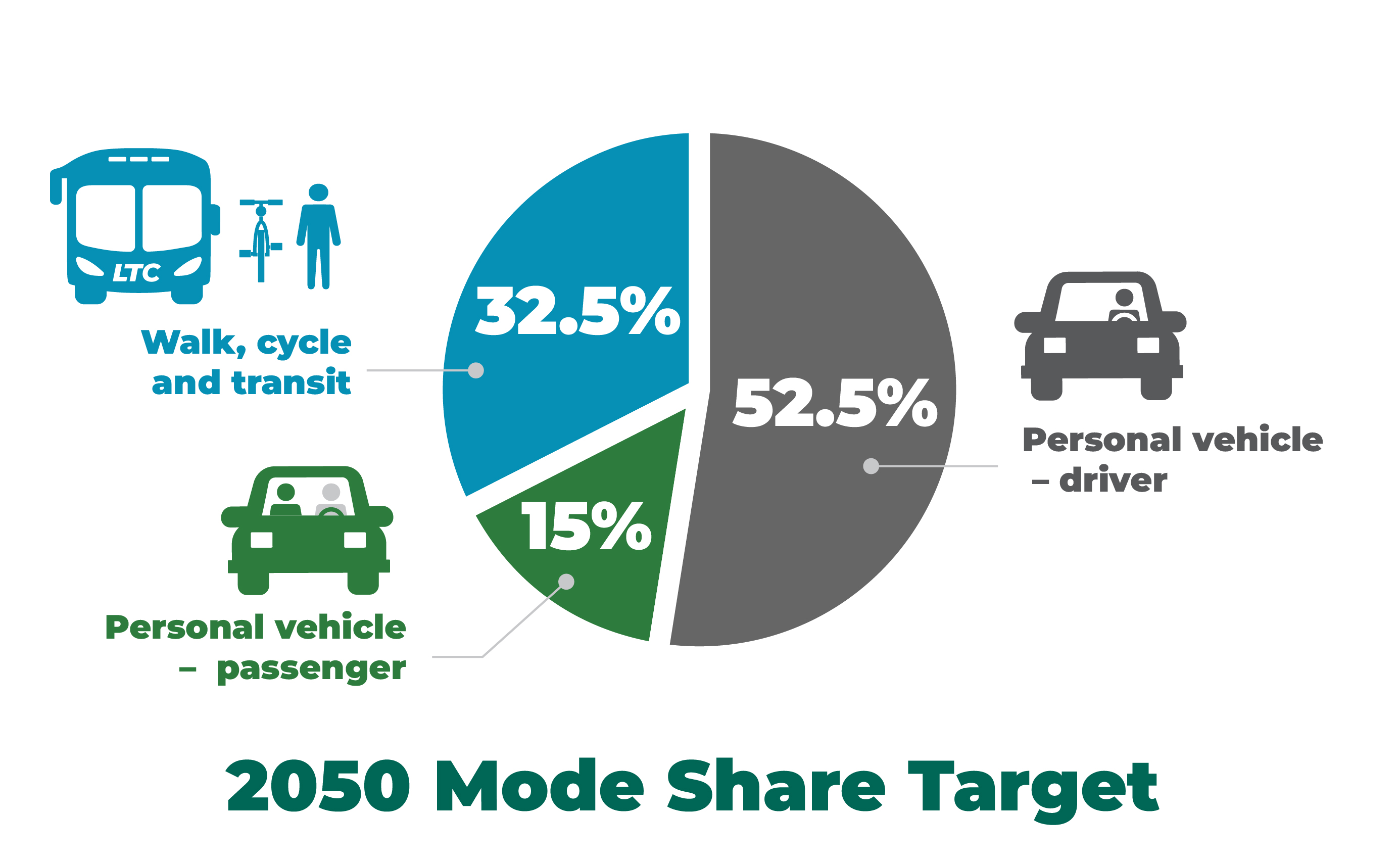This week, London City Council approved a mode share target for the Mobility Master Plan which sets a goal to increase the percentage of trips Londoners take using active modes of transportation and transit by 2050. The new mode share target – to be reviewed at least every four years and adjusted appropriately – would plan for an increase in the current walk, cycle, transit portion from 23% to 32.5% or greater and a decrease in the percentage of personal vehicle driving trips from 61% down to 52.5%.
Establishing a mode share target marks a significant milestone in the development of London’s Mobility Master Plan. The target will help inform the creation of draft transportation networks, policies and actions (projects or programs) that Londoners will be able to provide input on throughout the year, ahead of a draft Mobility Master Plan being presented to Council in 2025.
“Setting a mode share target is necessary to advance the plans we need to pursue funding for crucial infrastructure upgrades over the next 25 years," says Mayor Josh Morgan. “The decisions we are making now will impact future generations, opening up opportunities for employment, education and inter-regional travel.”
The Council-approved vision for the Mobility Master Plan is rooted in providing more transportation choices and enabling participation in city life, regardless of age, ability, income, or access to a personal vehicle. An increased focus on walking, cycling and transit is directly linked to building a more equitable city with less than 13% of households having access to a car and/or unable to drive (London Household Travel Survey, 2016) and income levels of less than $45,000 among 25 to 34-years-olds across Ontario (StatsCan, 2019-2020).
“A 32.5% mode share signifies a substantial shift towards sustainable modes of transportation such as walking, cycling, and public transit,” says Doug MacRae, Director of Transportation and Mobility. “A diversified mode share will help balance future investments across all modes of transportation to reduce greenhouse gas emissions, better manage road congestion, and promote healthier lifestyles.”
The next phase of work for the Mobility Master Plan involves developing actions (projects or programs) to support achieving the mode share target. This could include short and long-term initiatives such as infrastructure projects or smaller-scale projects and programs that make walking, cycling or taking transit more viable.
“Mode share is very important in the context of climate change because transportation is the top emitter of greenhouse gas emissions locally,” says Jay Stanford, Director of Climate Change, Environment and Waste Management. “Achieving our mode share target, and ultimately net-zero emissions by 2050, requires a strong willingness from Londoners, businesses and institutions to adjust how they move in their daily activities."
How to Get Involved
This spring, City staff will be inviting Londoners to provide ideas and input on actions to support and help achieve the 32.5% mode share target for the Mobility Master Plan. This will be followed by an opportunity to review and comment on draft future infrastructure improvements in fall 2024. Visit getinvolved.london.ca/mobility-master-plan to learn more or sign up for email notifications.


